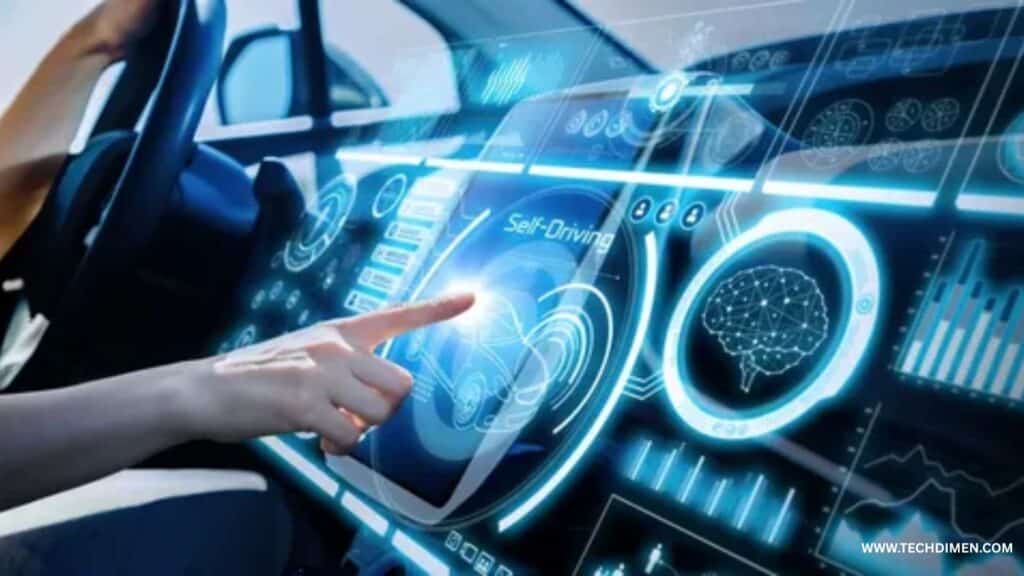The world in 2025 is experiencing a seismic shift powered by an unprecedented wave of technological breakthroughs. The technology drive this year isn’t just accelerating innovation it’s reshaping industries, redefining global competitiveness, and reimagining daily life. From AI workflow automation and smart home ecosystems to quantum computing and global digital regulation, the future is not only arriving it’s already here.
This in-depth guide explores the most impactful technology trends of 2025, providing expert insights, strategic context, and real-world examples to help you navigate a world in transformation.
The Core Technologies Powering Global Innovation
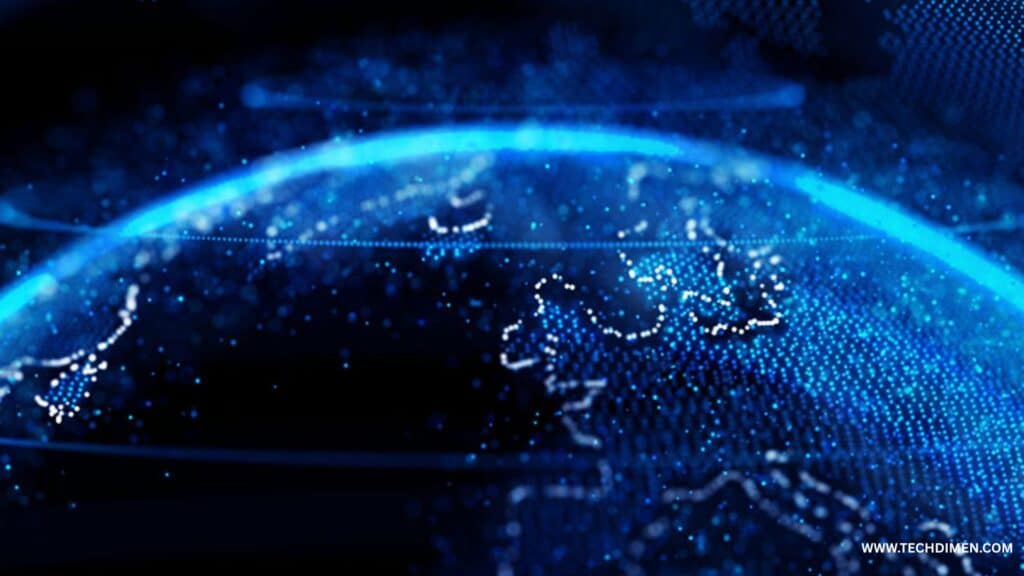
The most disruptive innovations in 2025 aren’t simply incremental they’re exponential. These advancements are transforming how we operate, communicate, and build sustainable solutions for the planet.
Modern innovation isn’t just about flashy gadgets it’s driven by foundational technologies transforming how we live, work, and connect. These core technologies are the engines behind the global digital shift, enabling everything from self-driving cars to climate-smart cities.
Artificial Intelligence (AI) and Machine Learning (ML)
AI and ML are no longer niche tools. They’re embedded in everything from healthcare diagnostics to finance, logistics, and entertainment.
Key Innovations:
- Generative AI (e.g., ChatGPT, DALL·E, Sora)
- Computer vision in autonomous vehicles
- AI-driven cybersecurity
- Predictive analytics for smart manufacturing
Why It Matters:
AI enables automation, faster decision-making, and pattern recognition at scale critical for businesses aiming to stay competitive.
Edge Computing and IoT Integration
Data is no longer just stored in the cloud it’s being processed on the edge, closer to where it’s generated.
Core Drivers:
- Industrial IoT (IIoT) in factories
- Smart home automation
- Real-time health monitoring devices
- Edge AI for remote operations
Impact:
Edge computing reduces latency, enhances privacy, and boosts the speed of real-time applications, making it vital for sectors like healthcare, energy, and logistics.
Quantum Computing

While still emerging, quantum computing promises exponential processing power that could solve problems classical computers can’t.
Breakthroughs Include:
- Quantum supremacy by Google and IBM
- Drug discovery and molecular simulation
- Advanced encryption and cryptography
- Financial modeling at quantum scale
Future Outlook:
Expect quantum to revolutionize data security, AI training models, and scientific research by 2030 but pilot applications are already underway.
Advanced Robotics and Automation
Robots are doing more than assembling cars. From warehouses to hospitals, they’re becoming intelligent collaborators.
Key Trends:
- Collaborative robots (“cobots”)
- Fully automated warehouses (e.g., Amazon, Ocado)
- Surgical robotics and micro-precision machines
- AI-driven exoskeletons and prosthetics
Why It’s Critical:
Labor shortages, rising costs, and demand for 24/7 productivity are driving rapid automation across sectors.
enewable Energy Tech & Battery Innovation
Sustainable technology isn’t optional it’s central to the future of innovation.
Main Developments:
- Solid-state and lithium-silicon batteries
- Smart grids with AI-based energy routing
- Grid-scale battery storage systems
- Solar and wind energy optimization with predictive software
Big Picture:
These technologies are transforming the energy sector from carbon-heavy to data-smart, enabling climate-resilient infrastructure.
Biotechnology and Synthetic Biology
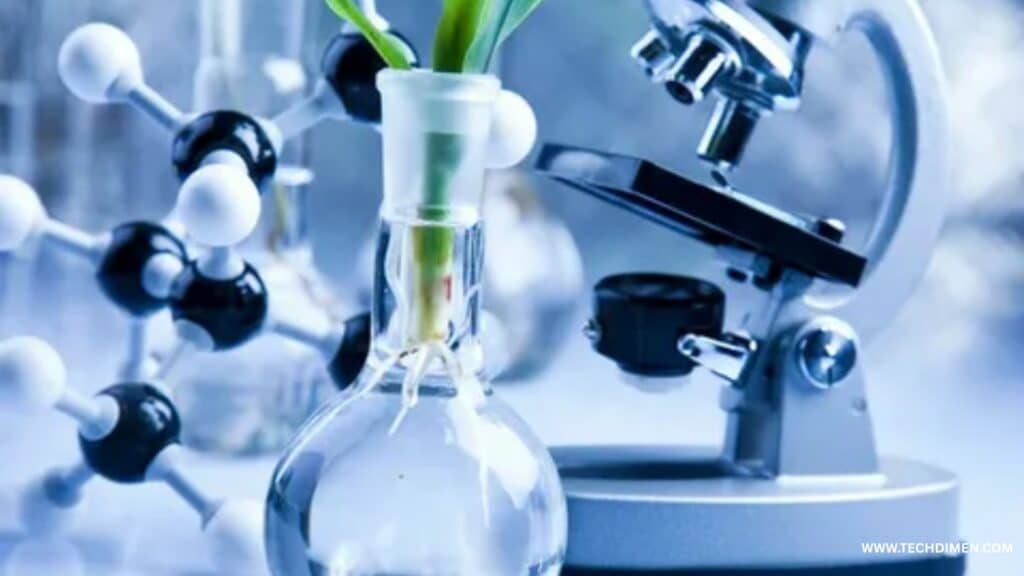
The merger of tech and biology is accelerating faster than expected.
Innovation Highlights:
- AI-designed proteins and CRISPR 3.0
- Biomanufacturing of materials and fuels
- Personalized medicine using genomic data
- Pandemic response platforms
What This Means:
Biotech is shifting from reactive care to proactive design rewriting how we treat disease, grow food, and engineer ecosystems.
Cybersecurity Mesh and Privacy Enhancing Technologies (PETs)
As data grows more valuable, protecting it becomes a top priority.
Next-Gen Cybersecurity Includes:
- Zero-trust architecture
- Federated learning and PETs
- AI-driven threat detection
- Cybersecurity mesh platforms (distributed security perimeters)
Why It’s a Game-Changer:
Traditional firewalls won’t cut it. Modern security must be adaptive, decentralized, and AI-enhanced.
Next-Gen Connectivity: 5G, 6G, and Satellite Internet
Connectivity is the backbone of every other innovation on this list.
Emerging Tech:
- 5G and 6G ultra-low latency networks
- Satellite constellations (e.g., Starlink, OneWeb)
- Private networks for enterprises
- Network slicing for real-time applications
Global Effect:
Next-gen connectivity will fuel remote work, autonomous systems, and real-time data streams, especially in underserved areas.
Blockchain and Decentralized Infrastructure
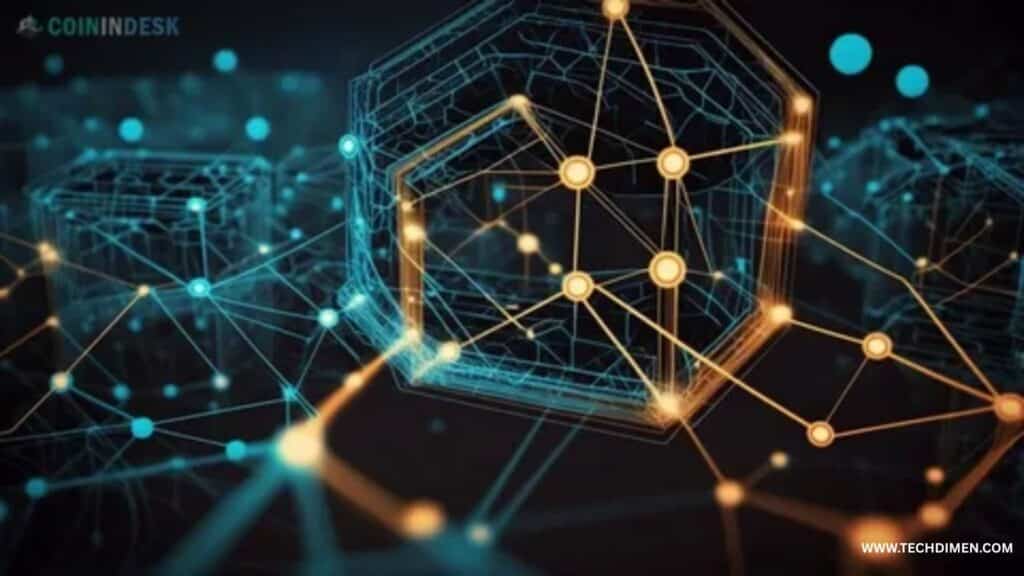
Beyond crypto, blockchain is creating transparent, tamper-proof systems for trustless interaction.
Applications Include:
- Supply chain tracking
- Decentralized identity (DID)
- Smart contracts and DAOs
- CBDCs and financial infrastructure
Why It Matters:
Trust, transparency, and decentralization are becoming essential pillars of digital governance and cross-border collaboration.
Human-Tech Interfaces and Extended Reality (XR)
The way humans interact with machines is being completely redefined.
Game-Changing Tools:
- Neural interfaces (e.g., Neuralink, Synchron)
- Holographic collaboration tools
- AR/VR in education, medicine, and industry
- Emotion-sensing tech and adaptive UX
The Vision:
A more immersive, intuitive, and personalized tech experience blurring lines between the physical and digital.
The Rise of Agentic AI and Self-Directed Systems
Agentic AI represents a fundamental evolution in artificial intelligence. Unlike traditional narrow AI models that follow static rules or rely on limited inputs, agentic systems exhibit autonomy, real-time learning, and decision-making capabilities. These AI models can simulate complex behaviors, cooperate with other agents, and operate across diverse environments.
Industries already seeing the impact include manufacturing, where autonomous robots now handle precision tasks while also optimizing entire assembly workflows. In healthcare, agentic AI supports predictive diagnostics that detect illnesses long before symptoms emerge. Customer service platforms are being revolutionized by ambient AI systems that understand tone, intent, and emotion, providing adaptive responses across digital channels.
As Dr. Linh Zhao of MIT CSAIL puts it, “Agentic AI is not about replacing humans. It’s about extending decision-making capabilities in real time across volatile environments.”
Advancements in Neuromorphic Computing
Neuromorphic computing is an emerging paradigm that emulates the architecture and processes of the human brain. By replicating the way neurons and synapses function, this approach delivers extraordinary improvements in processing speed and energy efficiency, especially in AI applications that require real-time inference.
Intel’s Loihi 2 chip exemplifies the power of this new model. It delivers inference speeds up to ten times faster than traditional processors, ideal for edge AI scenarios. Similarly, BrainChip’s neural processors are transforming smart surveillance by reducing power consumption while enhancing pattern recognition.
In sectors such as logistics and supply chain operations, neuromorphic computing enables predictive maintenance and ultra-fast decision loops key capabilities where milliseconds translate into millions in savings.
Mainstream Quantum Computing and Its Use Cases
Quantum computing in 2025 is transitioning from theory to execution. No longer confined to research labs, quantum systems are being deployed across critical applications. In pharmaceuticals, they are simulating molecular behavior to accelerate drug discovery. Financial institutions use quantum algorithms to solve complex optimization problems in seconds. Cybersecurity is evolving rapidly, as quantum key distribution ensures tamper-proof communications in high-risk environments.
Tech giants like IBM and D-Wave now offer cloud-based quantum access, which has led to a surge in demand for quantum computing specialists and job roles. With these capabilities scaling fast, businesses are integrating quantum workflows into their R&D and modeling frameworks.
Disruption in Consumer Technology and the Smart Home Revolution
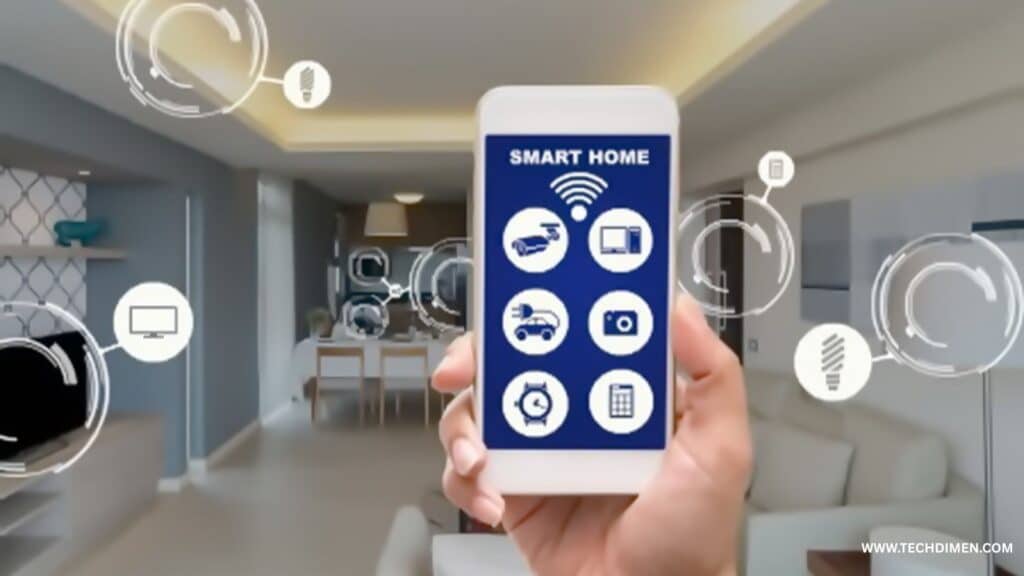
As artificial intelligence becomes more embedded in everyday life, the Technology Drive 2025 is less about novelty and more about necessity. The latest innovations prioritize wellness, autonomy, and more than ever data privacy.
The Smart Home as a Wellness Ecosystem
Wellness-oriented design is reshaping home environments. Advanced circadian lighting systems adapt light temperatures throughout the day to match your biological rhythms, improving sleep and mental well-being. Air purification systems now monitor carbon levels and detect harmful volatile organic compounds in real time, providing safer breathing spaces. Wearable devices have evolved into environmental guardians, tracking not only personal vitals but also the quality of the air, light, and noise around you.
According to the Healthy Home Institute, these technologies are no longer conveniences; they are critical components of preventive health strategies that benefit both body and mind.
Privacy-Centric Devices Take the Lead
Privacy has become a non-negotiable feature in Technology Drive 2025 landscape. Users now demand full transparency and the ability to control how their data is processed. In response, device manufacturers have introduced home automation systems with local-only processing, removing the need to send personal data to the cloud.
Smart thermostats powered by on-device AI can learn user behavior without transmitting sensitive information. Many devices now include physical camera shutters, visible LED indicators for active listening, and detailed logs of voice interactions to restore user trust.
Recent surveys show that nearly three-quarters of smart home users in 2025 prefer systems that offer on-device processing, a clear indication that privacy-first design is here to stay.
Tech Policies, Geopolitics, and the New Global Digital Order
Technology is no longer just a sector it’s a strategic pillar in diplomacy, trade, and national security. Countries are leveraging innovation not only to drive economic growth but also to secure geopolitical influence.
China’s Strategic Tech Ambitions
Through the “Made in China 2025” initiative, China is making bold moves to dominate emerging tech sectors. The strategy focuses on areas like robotics, aerospace, electric vehicles, and AI content authenticity tools. Chinese tech exports, especially platforms developed by firms such as SenseTime and Hikvision, are now being adopted worldwide marking a shift in the global AI influence map.
This aggressive global deployment underscores the ongoing tension between China and the United States over technological supremacy, market access, and data control.
The U.S. CHIPS Act and Strategic Tech Independence
In response, the United States has enacted the CHIPS Act, allocating over $52 billion toward boosting domestic semiconductor production. This funding supports the construction of advanced fabs in states like Arizona and Ohio by major players including Intel and TSMC.
The Act also aims to reduce reliance on foreign suppliers of critical components and materials, especially rare earth elements. Simultaneously, the U.S. is establishing ethical frameworks for AI governance, prioritizing transparency, human oversight, and national security.
Europe’s Push for Digital Sovereignty
The European Union’s Digital Markets Act introduces regulatory guardrails to rein in monopolistic behavior among Big Tech firms. It enforces platform access rules, ensures open competition, and limits the cross-border exploitation of user data.
Europe is also championing data localization through cloud infrastructure built by domestic providers, encouraging local innovation while protecting digital sovereignty. These moves mark a distinct regulatory path that balances open markets with rigorous consumer protections.
Enterprise Technology, AI Automation, and Industrial Upgrades
In the business-to-business landscape, 2025 is marked by sweeping automation, smarter infrastructure, and predictive capabilities that cut costs and increase agility.
AI-Powered Workflow Transformation
AI is now embedded deep into the operational fabric of industries. In insurance, natural language processing enables automated claims processing, reducing cycle time and fraud risk. Retailers use AI to analyze purchasing behavior and optimize product bundles in real time, adapting pricing to demand elasticity. In the energy sector, predictive algorithms powered by digital twins help balance supply and demand dynamically.
One notable case study involves a logistics firm in Germany that equipped its fleet with edge computing sensors and AI modules. Within six months, the company saw a 39% reduction in late deliveries proof that real-time AI is redefining efficiency.
Predictive Maintenance and Industrial IoT
Industrial IoT solutions in Technology Drive 2025 sensors embedded within critical machinery. These sensors work in tandem with AI to predict failures and recommend timely maintenance, which prevents costly downtimes. In manufacturing plants, robotics and automation systems now operate with self-healing protocols, drastically improving uptime.
In the automotive sector, predictive maintenance has cut average downtime by 43%, saving facilities over $1.2 million per year. Aerospace sees even greater savings, with an average of $3.5 million annually per site. Electronics manufacturers benefit from reduced disruptions and long-term cost efficiencies.
Urban Innovation, Clean Tech, and Environmental Engineering
Cities around the world are being transformed into living, learning systems through the adoption of smart infrastructure and green mobility solutions.
Building the Smart Cities of Tomorrow
The smart cities of 2025 are data-rich, environmentally conscious, and highly automated. Using digital twins, municipalities can simulate traffic, monitor infrastructure health, and anticipate future needs. AI traffic systems reduce congestion and carbon emissions, while carbon tracking tools allow for more accurate emission reporting and management.
Cities like Singapore are at the forefront, using real-time governance models powered by partners like Dassault Systèmes. Dubai has established autonomous vehicle corridors with the help of Cruise and Huawei. Meanwhile, Helsinki is deploying predictive climate modeling systems to prepare for environmental shifts, supported by IBM and Siemens.
Battery Swapping and the Future of Electric Vehicles
One of the major developments in clean mobility is battery swapping technology. Instead of waiting to charge, electric vehicle owners can exchange depleted batteries for fully charged ones in minutes. Companies like Nio in China, Gogoro in Taiwan, and Ample in the U.S. are leading the charge, offering modular, scalable systems.
These advances are supported by next-generation solid-state energy storage solutions, enabling smoother integration with national grids and reducing pressure during peak load periods.
SEO and Content Strategy for Tech Companies in 2025
To thrive in the competitive digital space, tech brands must align their SEO efforts with evolving user intent and search engine guidelines.
Structuring Content for Maximum Visibility
Effective content uses clearly defined H1, H2, and H3 tags that mirror keyword hierarchies. Long-tail phrases such as “real-world examples of edge computing” should be naturally placed within contextual discussions. This structure improves readability and relevance, which search engines prioritize.
Using Semantic and Intent-Based Keywords
Integrating semantic phrases like “ambient computing devices” and Technology Drive 2025” adds depth and aligns with search algorithms that understand contextual meaning. Schema markup for FAQ sections, case studies, and how-to content enhances visibility on results pages and improves click-through rates.
Meeting Google’s E-E-A-T Standards
In 2025, Google places increased emphasis on Experience, Expertise, Authoritativeness, and Trustworthiness. Brands should cite credible sources, include author bios with relevant technical credentials, and offer rich media like infographics or flow diagrams that explain complex topics. These enhancements not only improve rankings but also build long-term user trust.
FAQs: Technology Drive 2025
1. What is Technology Drive?
Technology Drive refers to the collective momentum of emerging technologies like AI, robotics, and renewable energy that are transforming industries, economies, and daily life. It highlights the intersection of digital innovation and real-world application.
2. Why is technology driving global innovation in 2025?
Technology Drive like artificial intelligence, edge computing, and 5G are reaching maturity. This convergence enables faster decision-making, smarter automation, and greater connectivity, accelerating innovation in every sector from healthcare to transportation.
3. Which technologies are leading the digital transformation in 2025?
The leading technologies include:
- Artificial Intelligence (AI)
- Edge Computing and IoT
- Quantum Computing
- Advanced Robotics
- Renewable Energy Tech
- Biotechnology
- Cybersecurity Mesh
- 5G/6G and Satellite Internet
- Blockchain and Decentralized Systems
- Extended Reality (AR/VR)
4. How is AI transforming industries today?
AI is enabling predictive analytics, automating complex workflows, personalizing digital experiences, and enhancing everything from supply chains to medical diagnostics. In 2025, AI is central to innovation strategies across all major industries.
5. What role does quantum computing play in future tech?
Quantum computing offers exponentially faster processing for solving problems traditional computers can’t handle. It’s expected to revolutionize fields like drug discovery, cybersecurity, financial modeling, and complex simulations.
6. How does 5G (and 6G) impact innovation?
5G enables ultra-fast, low-latency wireless communication. This supports real-time applications like autonomous vehicles, smart factories, remote surgeries, and immersive AR/VR experiences. 6G will take these capabilities even further with AI-native networks.
7. What is the cybersecurity mesh, and why is it important?
A cybersecurity mesh is a flexible, modular approach to digital security where individual devices and systems are protected independently. It’s critical in a world where traditional network perimeters no longer exist due to remote work and IoT expansion.
8. How is technology driving sustainability and clean energy?
Innovations in battery storage, smart grids, AI-based energy management, and green manufacturing are making renewable energy scalable and efficient. These technologies are crucial for achieving global climate goals and energy independence.
9. What is the role of biotechnology in modern innovation?
Biotechnology combines biology and digital technology to create new treatments, sustainable materials, and synthetic biology solutions. It’s key in precision medicine, vaccine development, agriculture, and even biofuel production.
10. What are edge computing and IoT, and how do they work together?
Edge computing processes data closer to the source like sensors or smart devices rather than in a central cloud. When combined with IoT, this enables faster responses, better privacy, and more resilient systems for real-time applications.
11. How are human-tech interfaces evolving
From neural implants to adaptive UX design and emotion-aware devices, human-tech interfaces are becoming more intuitive and immersive. Technologies like AR glasses, brain-computer interfaces, and haptic feedback are revolutionizing how we interact with machines.
12. How can businesses prepare for the Technology Drive of 2025?
Businesses should:
- Invest in AI and automation
- Strengthen cybersecurity frameworks
- Embrace cloud, edge, and IoT infrastructure
- Upskill their workforce in digital tools
- Explore sustainability tech and data-driven operations
13. What industries will be most disrupted by 2025 technology trends?
Key sectors undergoing major disruption include:
- Healthcare
- Manufacturing
- Logistics and Supply Chain
- Education
- Finance and Insurance
- Energy and Utilities
- Agriculture
- Retail and E-commerce
14. What is decentralized infrastructure and why is it growing?
Decentralized infrastructure like blockchain networks and distributed cloud offers transparency, control, and resilience. It’s growing as companies seek to reduce central points of failure and create trustless, verifiable systems.
15. Are these technologies accessible to small businesses?
Yes. Cloud-based services, open-source tools, and scalable platforms make it easier for startups and SMBs to tap into advanced technologies like AI, IoT, and data analytics without massive upfront investment.
Final Thoughts: Technology Drive
The technology landscape in 2025 is defined by convergence AI, edge computing, and decentralized systems working in tandem to transform how we live and work. The technology drive isn’t simply about faster processors or smarter devices. It’s about designing systems that are resilient, ethical, and ready for the unexpected.
To prepare, individuals and organizations must invest in continuous learning, monitor emerging regulatory frameworks, and adopt adaptive technologies that can scale with complexity.
As Tech Strategist Anika Lee shared at Davos 2025, “The most successful companies in 2025 aren’t the most advanced they’re the most adaptable.”

Jhon AJS is a tech enthusiast and author at Tech Dimen, where he explores the latest trends in technology and TV dimensions. With a passion for simplifying complex topics, Jhon aims to make tech accessible and engaging for readers of all levels.

